About me
EN
FR
Doctena
Sector
Healthcare Platform
Target Users portals
Practitioners / Secretaries
Patients
Onboarding Team (Client Success)
Government / Partnership
Roles
Design Leadership & Strategy
UX Research & Optimization
UI Design & Advanced Prototyping
Design System Creation & Management
Cross-Team Collaboration
DATE
2020 / 2025
Since the invention of the telephone, making a medical appointment has often been a hassle: choosing from unfamiliar practitioners, then waiting on the phone listening to annoying music, only to receive incomplete information. Secretaries, meanwhile, endlessly repeat details like the entry code.
Doctena understood that booking a medical appointment should be as easy as booking a hotel or a flight, and accessible at any time. The platform allows patients to directly view the practitioner’s calendar and book appointments with just a few clicks. Practitioners, in turn, can manage the availability of their team, rooms, and equipment, and set specific booking rules.
Since its launch in 2013, Doctena has expanded to six European markets and now has 4,600 practitioners across more than 100 specialties, with 1.7 million appointments per month, reducing no-shows by up to 70%.
Make booking medical appointments effortless for
Patients
&
Practitioners
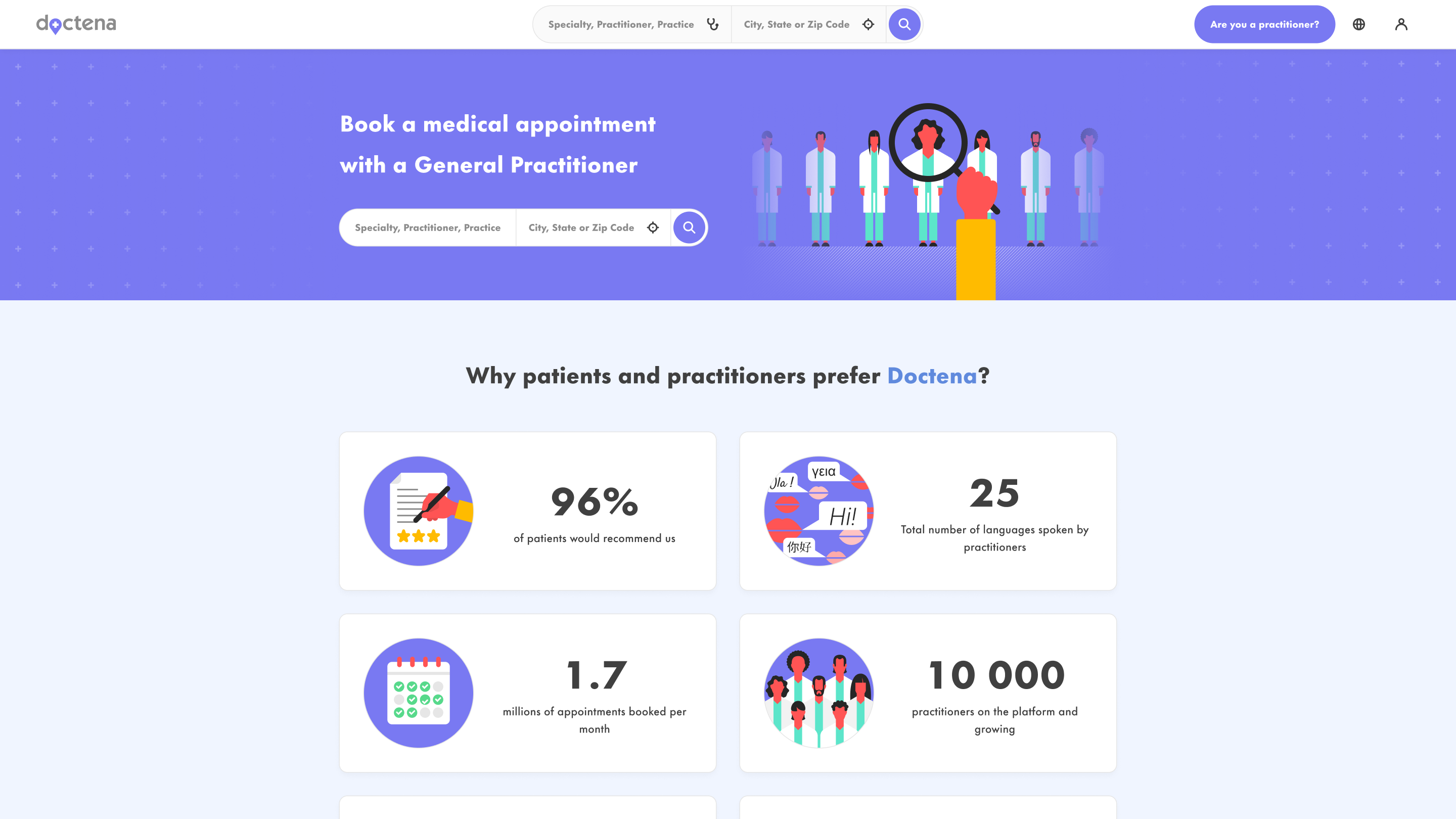
A Much-Needed Check-Up
The old platform had a few symptoms. Each issue was a signal that the interface needed urgent care. By diagnosing these problems, listening the patients, I could prescribe a redesign that would restore the platform to full health. The team of integrators and developers had somehow managed to maintain a minimum of coherence in a flow of information, despite the absence of a Design department.
... A ten years old interface ...
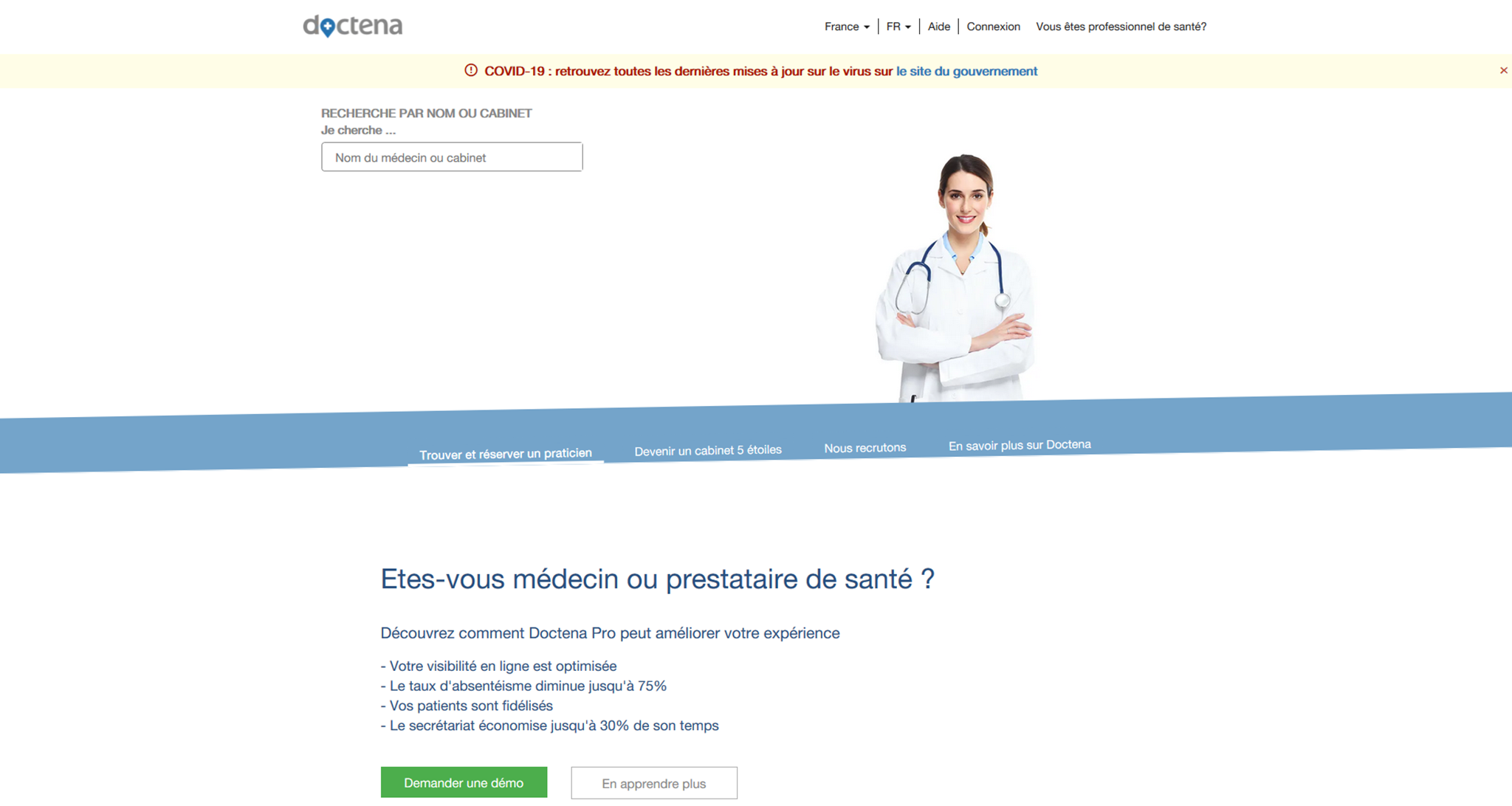
👀
Visual Fatigue
Tiny fonts, mismatched colors, ugly stock bitmaps and more boxes than a pharmacy storage room.
🧭
Navigation Disorder
Users got lost faster than patients in a hospital corridor without signs.
😰
Appointment Anxiety
Too many clicks before booking → stress levels higher than a waiting room at 8 AM.
🫀
Malfunctioning Organs
Some critical features are in critical condition, causing user blockages and workflow cardiac arrest.
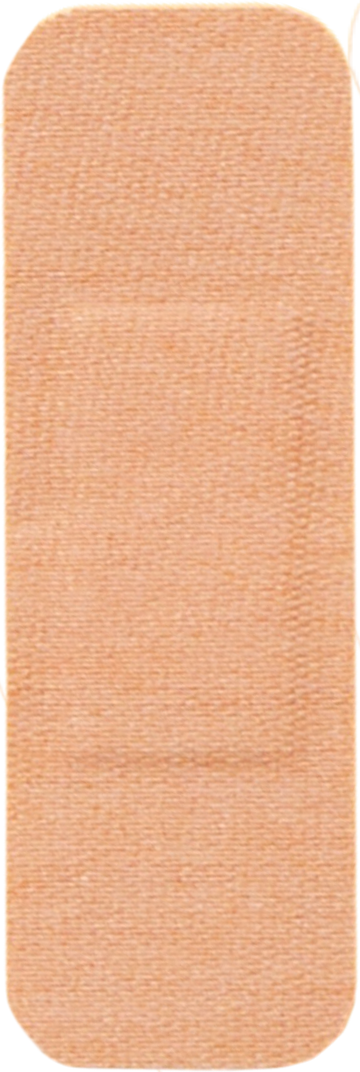

Scanning the user
To ensure the product aligned with user expectations, we conducted a light discovery phase involving both patients, practitioners and secretaries. While it wasn’t a full-scale ethnographic immersion, it allowed us to ”scan” their needs, capture recurring patterns, and extract just enough insights and datas to guide the rework with confidence.
Subject 001:
The Patient
Subject 002:
The Practitioner
Subject 003:
The Secretary

⯈ Insights!
Pre-Operative Research
In approaching the redesign, my first consideration was to work with the anatomy of the past. It was my intention to weave myself into the structure of what already existed, to engage as if I were a surgeon, not merely with the surface but with the hidden systems, the brain, organs, and nervous network, bringing clarity and cohesion rather than imposing superficial change. By drawing deeply from historical practices, I sought to ensure the final design remained authentic, yet gracefully adapted to the living context of modern online medical booking.
Anatomy & Systems
Each layer reveals a network of interdependent parts, guiding the flow of information like a living map.

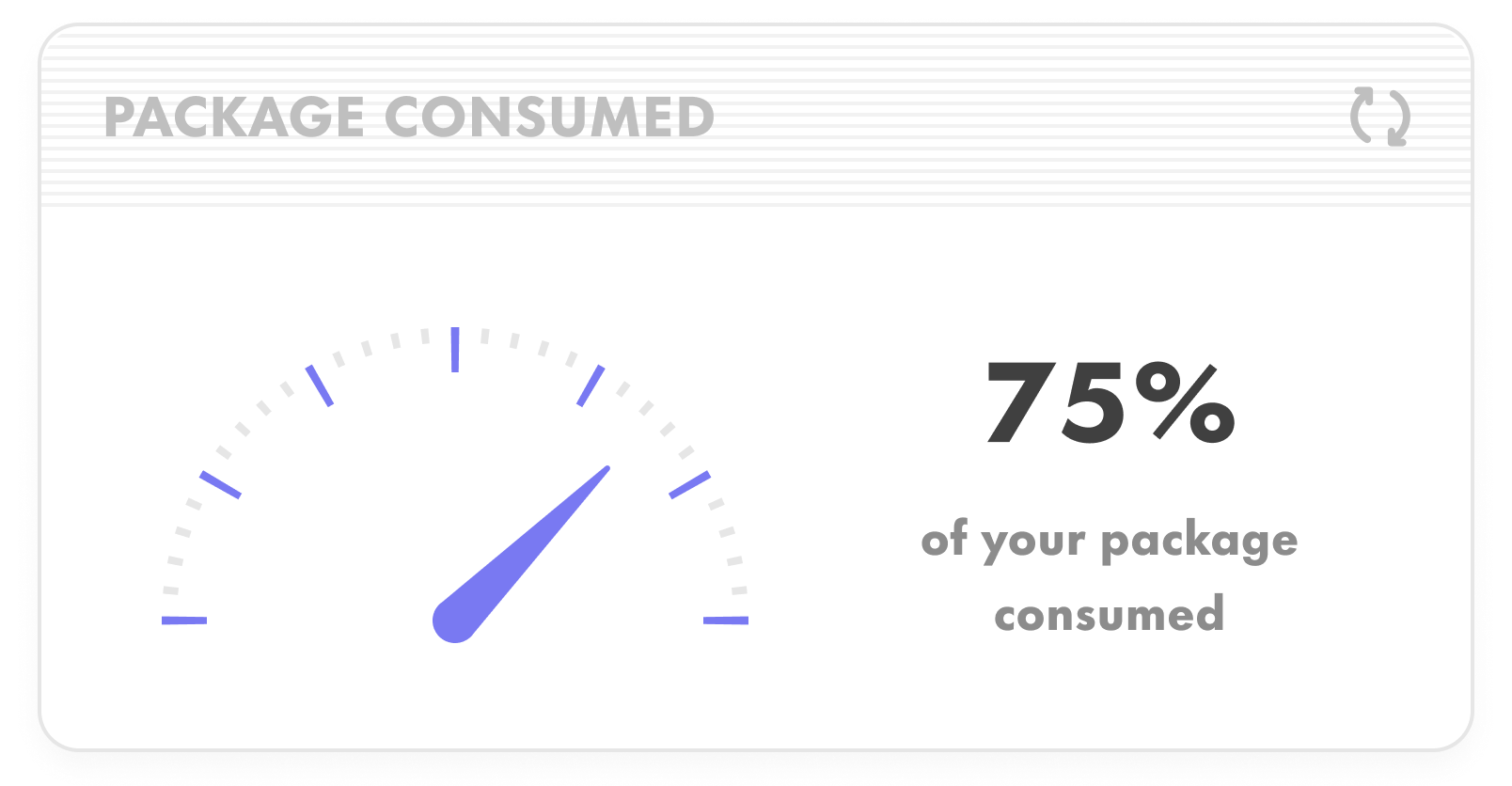
Classification & History
Categories draw from centuries of medical knowledge, from humoral theory to modern taxonomies, tracing pathways that structure understanding.





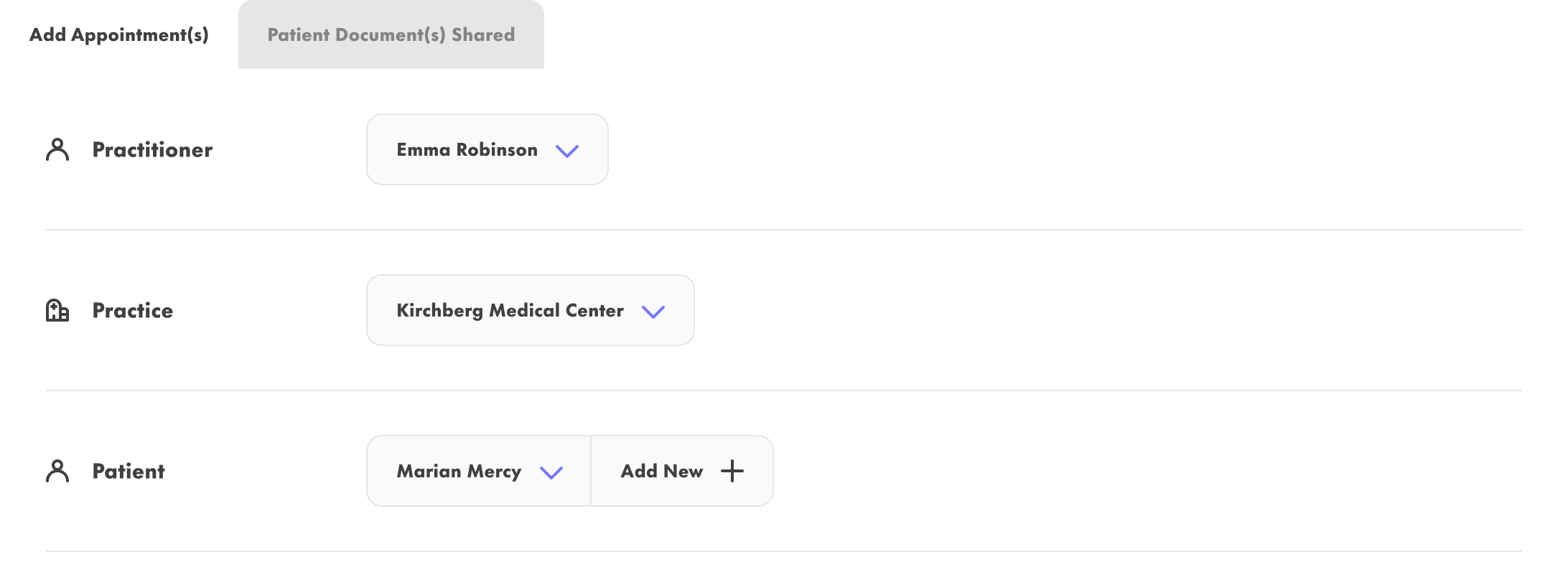
Prescribing a Design System
To prevent future interface ailments, I created a robust design system that standardized colors, typography, icons, illustrations and advanced components, like a prescription ensuring consistent and healthy interactions. The different portals were harmonized, the brand identity refined, and the UI made more reliable, accessible, and easy to maintain.
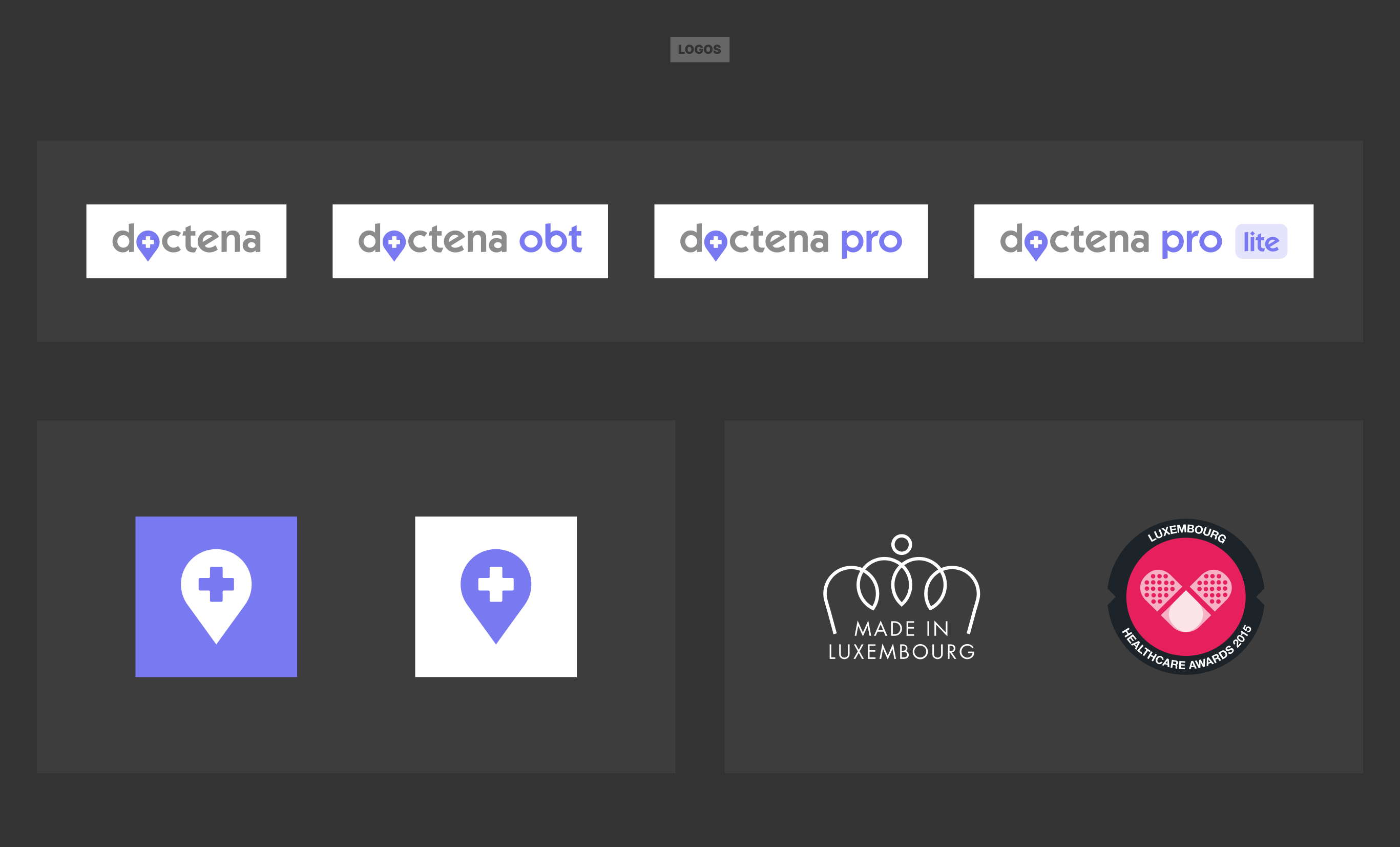
Surgical Redesign +Interface Clinical Trials
All pages were reviewed and refined like a surgeon repairing vital organs. The unified login and optimized Patient & Practitioner portals were tested through interactive prototypes in controlled “lab conditions”, ensuring the interface is efficient, clear, and fully vetted before handoff.
The Desktop Patient / Practitioner Portal
I spent most of my 5 years working on this high-end advanced prototype. Go ahead, click “See Prototype” and try to connect, either as a patient or as a practitioner and take a look to the settings.
See Prototype
The New Lite Mobile Application
A streamlined, lightweight version of the platform designed for faster access and simplified workflows. Optimized for mobile and low-bandwidth environments, it ensures patients and practitioners can quickly book, manage, and track appointments without unnecessary complexity.
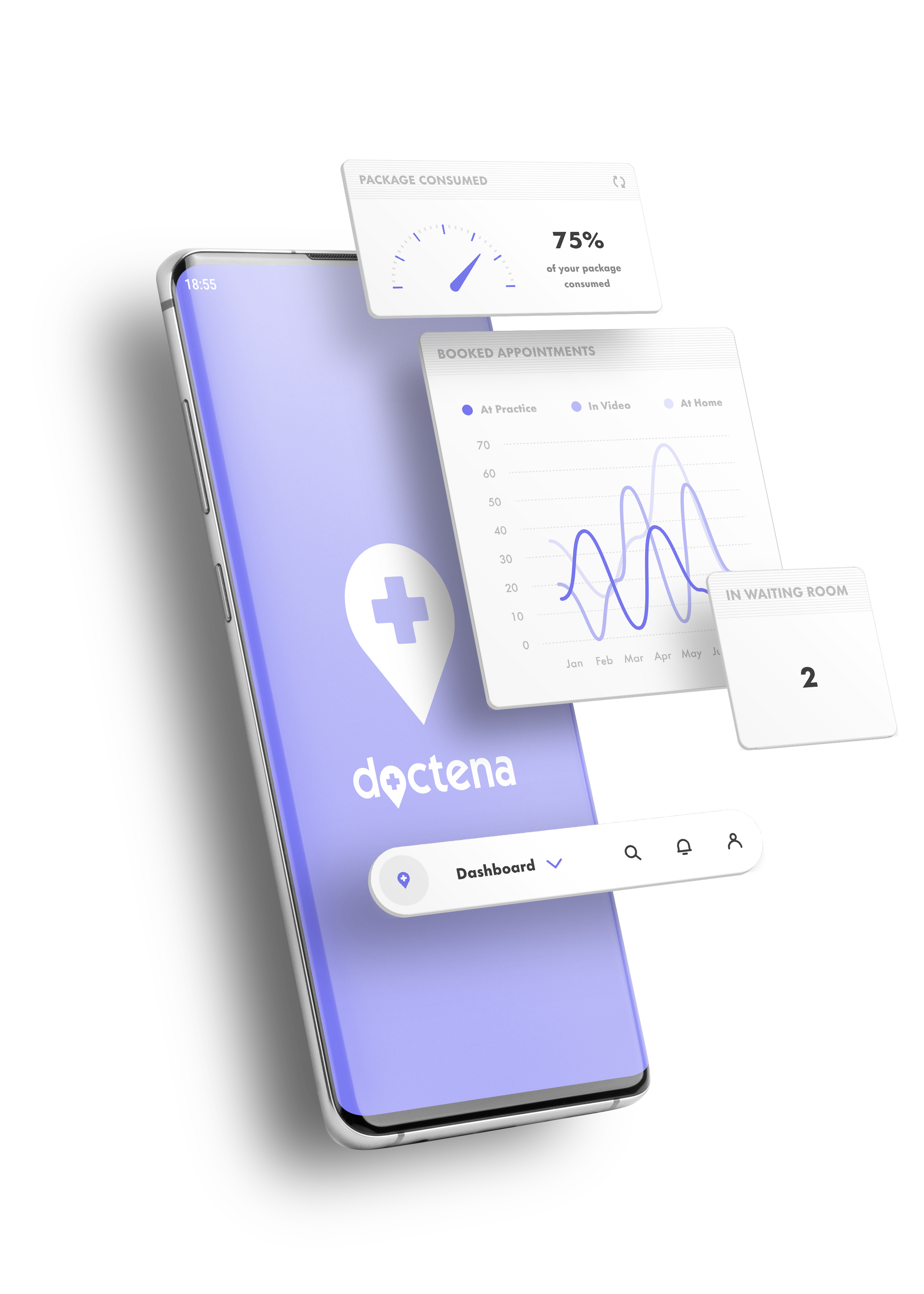
Many solutions required more than a dull design specification document.Instead of relying on static files, I used prototypes to directly illustrate ideas to convince the business team and support the integration team. Here is an example with the Text Language Selector behavior.
See Prototype
Specific Behaviors
Many solutions required more than a dull design specification document.Instead of relying on static files, I used prototypes to directly illustrate ideas to convince the business team and support the integration team. Here is an example with the Text Language Selector behavior.
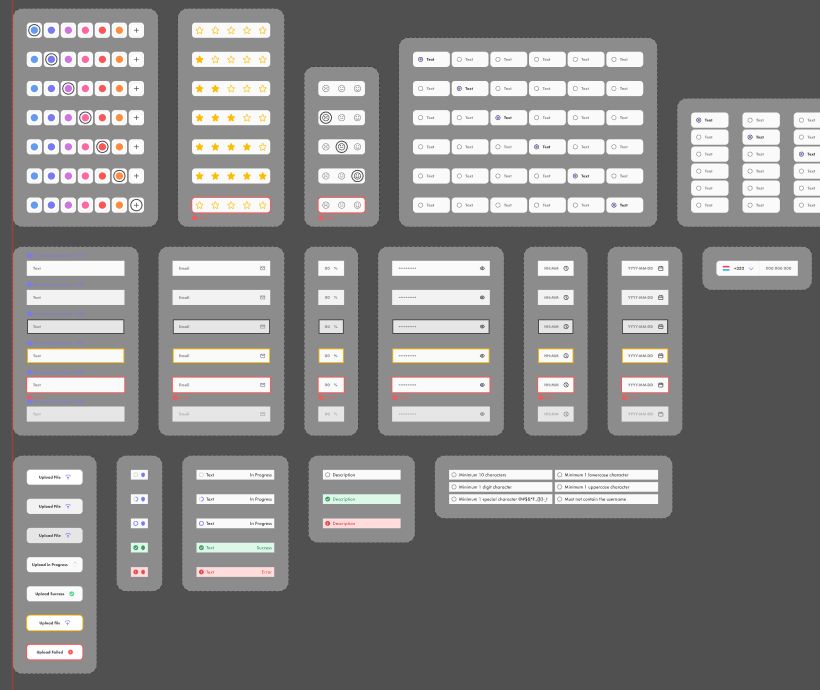



See Prototype
Beyond the Standard:Biohacking the Interface
I didn’t just redesign, I experimented, suggesting new features. Every flow, micro-interaction, and component was observed, tested, and optimized like a lab experiment. The goal? Push the interface beyond standard practices, uncover hidden user behaviors, and create an experience that’s intuitive, efficient, and just a little bit futuristic.

Here’s a concrete example for “Notes”, used for communication between practitioners.
The main issue raised was the prioritization of information.

Practitioners were sending messages to themselves, using it as a task manager.
The solution was to provide them with a more user-friendly Kanban-style interface.
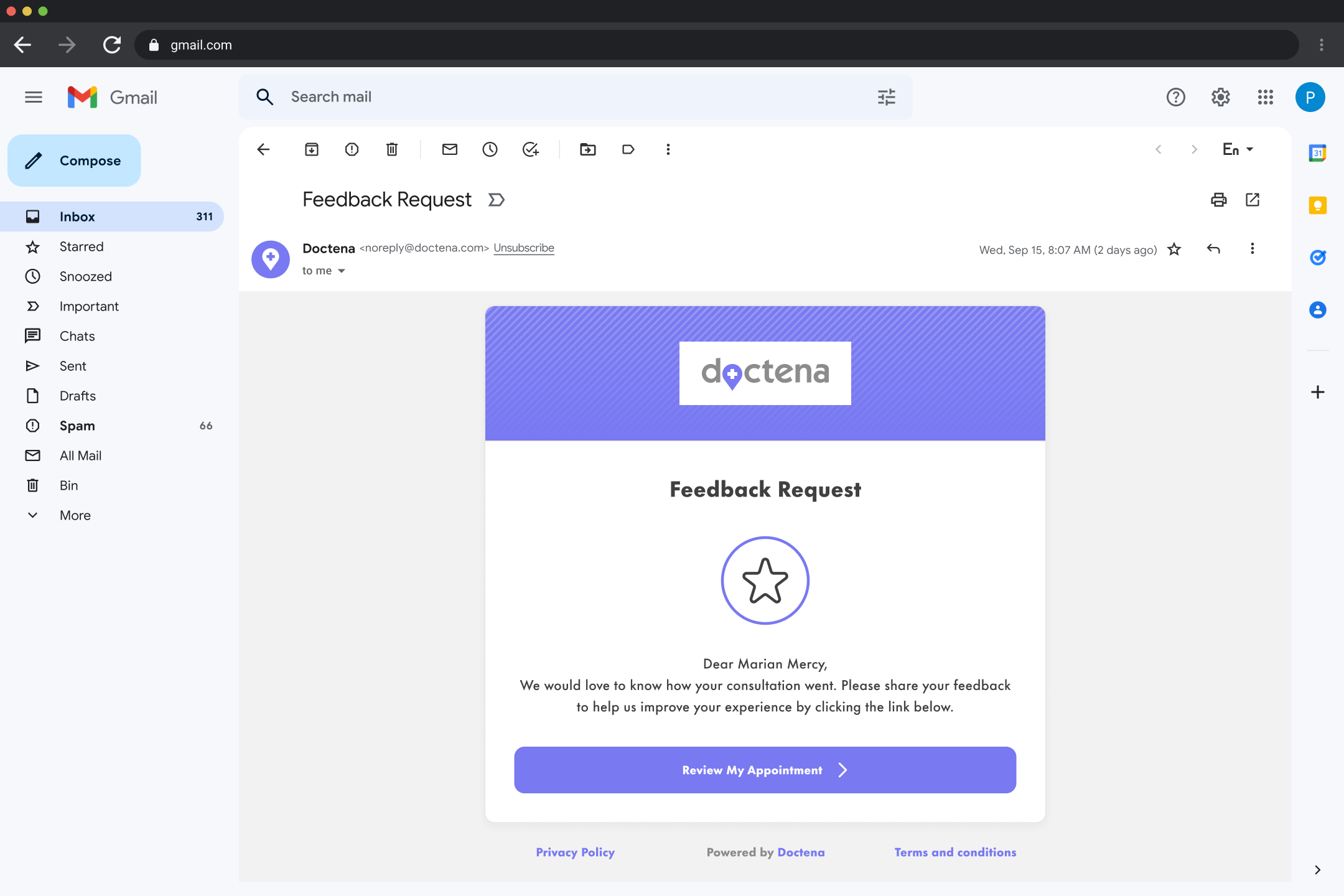
39 notifications, one seamless redesign.
Signs of Recovery:Keeping Track of the Biomarkers
After implementing the redesign, we measured the vital signs of the platform: user engagement, task completion, and adoption rates.Each KPI acted like a biomarker, showing us what was healthy, what needed attention, and where the interface was thriving.The results? Users completed bookings faster, fewer errors, and an overall smoother experience, proof that the cure really worked.
151
pages redesigned
64
components created
382
icons created
113
color styles
Structure & Navigation
Results
Rework of UI/UX
3 platforms unified / 6 account types streamlined
Restructuring all pages
151 pages reworked / 67 removed
Streamlined header/menu
Navigation depth reduced by 42%
Non-obscuring content Panels (Menu / Filters / Map)
100% content visibility
Critical path bookings
+22% reservations completed successfully
Usability & User Assistance
Results
Guided tours and search bars creation
-45% support contact
Minimizing optional elements
Interface density reduced by 30%
Natural user flow
Error rate on key tasks down -38%
Error handling
Recovery time reduced by 50%
User Satisfaction (NPS)
+30 points
Consistency & Performance
Results
Consistency across platforms
100% UI elements standardized
Responsiveness
Load times < 1.8s on all devices
Brand representation
Brand adherence score +35%
Performance
Improved speed by 28%
Average page weight
Reduced by 40% (faster rendering)
Features & Personalization
Results
Integrating features
+12 new features released
Modern components and personalization options
Performed
UX wording
Performed + new process created for Marketing publication
Incorporating community feature requests
Less A/B testing & More user adoption
Feature delivery time
Reduced by 35% (team efficiency gain)
Clarity & Accessibility
Results
Reducing cognitive load
Avg. steps per task –75%
Simplifying technical aspects
Helpdesk calls –85%
Improving accessibility
WCAG 2.1 AA compliance reached
Data visualization
Time to interpret reports –40%
Security & Compliance
100% GDPR & ISO27001 validated
Key Results / KPIs
Results
User Errors when users try to take appointments
-75%
Task Completion Rate with more users finishing actions without blockage
+60%
Time on Critical Flows reducing the time needed to complete important tasks
-40%
Mobile Engagement improving usage on mobile devices
+85%
Conversion Rate on booking flows
+18%
Selected works
About me
EN
FR
Doctena
Sector
Healthcare Platform
Target Users portals
Practitioners / Secretaries
Patients
Onboarding Team (Client Success)
Government / Partnership
Roles
Design Leadership & Strategy
UX Research & Optimization
UI Design & Advanced Prototyping
Design System Creation & Management
Cross-Team Collaboration
DATE
2020 / 2025
Since the invention of the telephone, making a medical appointment has often been a hassle: choosing from unfamiliar practitioners, then waiting on the phone listening to annoying music, only to receive incomplete information. Secretaries, meanwhile, endlessly repeat details like the entry code.
Doctena understood that booking a medical appointment should be as easy as booking a hotel or a flight, and accessible at any time. The platform allows patients to directly view the practitioner’s calendar and book appointments with just a few clicks. Practitioners, in turn, can manage the availability of their team, rooms, and equipment, and set specific booking rules.
Since its launch in 2013, Doctena has expanded to six European markets and now has 4,600 practitioners across more than 100 specialties, with 1.7 million appointments per month, reducing no-shows by up to 70%.
Make booking medical appointments effortless for
Patients
&
Practitioners

A Much-Needed Check-Up
The old platform had a few symptoms. Each issue was a signal that the interface needed urgent care. By diagnosing these problems, listening the patients, I could prescribe a redesign that would restore the platform to full health. The team of integrators and developers had somehow managed to maintain a minimum of coherence in a flow of information, despite the absence of a Design department.
... A ten years old interface ...

👀
Visual Fatigue
Tiny fonts, mismatched colors, ugly stock bitmaps and more boxes than a pharmacy storage room.
🧭
Navigation Disorder
Users got lost faster than patients in a hospital corridor without signs.
😰
Appointment Anxiety
Too many clicks before booking → stress levels higher than a waiting room at 8 AM.
🫀
Malfunctioning Organs
Some critical features are in critical condition, causing user blockages and workflow cardiac arrest.


Scanning the user
To ensure the product aligned with user expectations, we conducted a light discovery phase involving both patients, practitioners and secretaries. While it wasn’t a full-scale ethnographic immersion, it allowed us to ”scan” their needs, capture recurring patterns, and extract just enough insights and datas to guide the rework with confidence.
Subject 001:
The Patient
Subject 002:
The Practitioner
Subject 003:
The Secretary

⯈ Insights!
Pre-Operative Research
In approaching the redesign, my first consideration was to work with the anatomy of the past. It was my intention to weave myself into the structure of what already existed, to engage as if I were a surgeon, not merely with the surface but with the hidden systems, the brain, organs, and nervous network, bringing clarity and cohesion rather than imposing superficial change. By drawing deeply from historical practices, I sought to ensure the final design remained authentic, yet gracefully adapted to the living context of modern online medical booking.
Anatomy & Systems
Each layer reveals a network of interdependent parts, guiding the flow of information like a living map.


Classification & History
Categories draw from centuries of medical knowledge, from humoral theory to modern taxonomies, tracing pathways that structure understanding.






Prescribing a Design System
To prevent future interface ailments, I created a robust design system that standardized colors, typography, icons, illustrations and advanced components, like a prescription ensuring consistent and healthy interactions. The different portals were harmonized, the brand identity refined, and the UI made more reliable, accessible, and easy to maintain.

Surgical Redesign +Interface Clinical Trials
All pages were reviewed and refined like a surgeon repairing vital organs. The unified login and optimized Patient & Practitioner portals were tested through interactive prototypes in controlled “lab conditions”, ensuring the interface is efficient, clear, and fully vetted before handoff.
The Desktop Patient / Practitioner Portal
I spent most of my 5 years working on this high-end advanced prototype. Go ahead, click “See Prototype” and try to connect, either as a patient or as a practitioner and take a look to the settings.
See Prototype
The New Lite Mobile Application
A streamlined, lightweight version of the platform designed for faster access and simplified workflows. Optimized for mobile and low-bandwidth environments, it ensures patients and practitioners can quickly book, manage, and track appointments without unnecessary complexity.

Many solutions required more than a dull design specification document.Instead of relying on static files, I used prototypes to directly illustrate ideas to convince the business team and support the integration team. Here is an example with the Text Language Selector behavior.
See Prototype
Specific Behaviors
Many solutions required more than a dull design specification document.Instead of relying on static files, I used prototypes to directly illustrate ideas to convince the business team and support the integration team. Here is an example with the Text Language Selector behavior.




See Prototype
Beyond the Standard:Biohacking the Interface
I didn’t just redesign, I experimented, suggesting new features. Every flow, micro-interaction, and component was observed, tested, and optimized like a lab experiment. The goal? Push the interface beyond standard practices, uncover hidden user behaviors, and create an experience that’s intuitive, efficient, and just a little bit futuristic.

Here’s a concrete example for “Notes”, used for communication between practitioners.
The main issue raised was the prioritization of information.

Practitioners were sending messages to themselves, using it as a task manager.
The solution was to provide them with a more user-friendly Kanban-style interface.

39 notifications, one seamless redesign.
Signs of Recovery:Keeping Track of the Biomarkers
After implementing the redesign, we measured the vital signs of the platform: user engagement, task completion, and adoption rates.Each KPI acted like a biomarker, showing us what was healthy, what needed attention, and where the interface was thriving.The results? Users completed bookings faster, fewer errors, and an overall smoother experience, proof that the cure really worked.
151
pages redesigned
64
components created
382
icons created
113
color styles
Structure & Navigation
Results
Rework of UI/UX
3 platforms unified / 6 account types streamlined
Restructuring all pages
151 pages reworked / 67 removed
Streamlined header/menu
Navigation depth reduced by 42%
Non-obscuring content Panels (Menu / Filters / Map)
100% content visibility
Critical path bookings
+22% reservations completed successfully
Usability & User Assistance
Results
Guided tours and search bars creation
-45% support contact
Minimizing optional elements
Interface density reduced by 30%
Natural user flow
Error rate on key tasks down -38%
Error handling
Recovery time reduced by 50%
User Satisfaction (NPS)
+30 points
Consistency & Performance
Results
Consistency across platforms
100% UI elements standardized
Responsiveness
Load times < 1.8s on all devices
Brand representation
Brand adherence score +35%
Performance
Improved speed by 28%
Average page weight
Reduced by 40% (faster rendering)
Features & Personalization
Results
Integrating features
+12 new features released
Modern components and personalization options
Performed
UX wording
Performed + new process created for Marketing publication
Incorporating community feature requests
Less A/B testing & More user adoption
Feature delivery time
Reduced by 35% (team efficiency gain)
Clarity & Accessibility
Results
Reducing cognitive load
Avg. steps per task –75%
Simplifying technical aspects
Helpdesk calls –85%
Improving accessibility
WCAG 2.1 AA compliance reached
Data visualization
Time to interpret reports –40%
Security & Compliance
100% GDPR & ISO27001 validated
Key Results / KPIs
Results
User Errors when users try to take appointments
-75%
Task Completion Rate with more users finishing actions without blockage
+60%
Time on Critical Flows reducing the time needed to complete important tasks
-40%
Mobile Engagement improving usage on mobile devices
+85%
Conversion Rate on booking flows
+18%
Selected works
About me
EN
FR
Doctena
Sector
Healthcare Platform
Target Users portals
Practitioners / Secretaries
Patients
Onboarding Team (Client Success)
Government / Partnership
Roles
Design Leadership & Strategy
UX Research & Optimization
UI Design & Advanced Prototyping
Design System Creation & Management
Cross-Team Collaboration
DATE
2020 / 2025
Since the invention of the telephone, making a medical appointment has often been a hassle: choosing from unfamiliar practitioners, then waiting on the phone listening to annoying music, only to receive incomplete information. Secretaries, meanwhile, endlessly repeat details like the entry code.
Doctena understood that booking a medical appointment should be as easy as booking a hotel or a flight, and accessible at any time. The platform allows patients to directly view the practitioner’s calendar and book appointments with just a few clicks. Practitioners, in turn, can manage the availability of their team, rooms, and equipment, and set specific booking rules.
Since its launch in 2013, Doctena has expanded to six European markets and now has 4,600 practitioners across more than 100 specialties, with 1.7 million appointments per month, reducing no-shows by up to 70%.
Make booking medical appointments effortless for
Patients
&
Practitioners

A Much-Needed Check-Up
The old platform had a few symptoms. Each issue was a signal that the interface needed urgent care. By diagnosing these problems, listening the patients, I could prescribe a redesign that would restore the platform to full health. The team of integrators and developers had somehow managed to maintain a minimum of coherence in a flow of information, despite the absence of a Design department.
... A ten years old interface ...

👀
Visual Fatigue
Tiny fonts, mismatched colors, ugly stock bitmaps and more boxes than a pharmacy storage room.
🧭
Navigation Disorder
Users got lost faster than patients in a hospital corridor without signs.
😰
Appointment Anxiety
Too many clicks before booking → stress levels higher than a waiting room at 8 AM.
🫀
Malfunctioning Organs
Some critical features are in critical condition, causing user blockages and workflow cardiac arrest.


Scanning the user
To ensure the product aligned with user expectations, we conducted a light discovery phase involving both patients, practitioners and secretaries. While it wasn’t a full-scale ethnographic immersion, it allowed us to ”scan” their needs, capture recurring patterns, and extract just enough insights and datas to guide the rework with confidence.
Subject 001:
The Patient
Subject 002:
The Practitioner
Subject 003:
The Secretary

⯈ Insights!
Pre-Operative Research
In approaching the redesign, my first consideration was to work with the anatomy of the past. It was my intention to weave myself into the structure of what already existed, to engage as if I were a surgeon, not merely with the surface but with the hidden systems, the brain, organs, and nervous network, bringing clarity and cohesion rather than imposing superficial change. By drawing deeply from historical practices, I sought to ensure the final design remained authentic, yet gracefully adapted to the living context of modern online medical booking.
Anatomy & Systems
Each layer reveals a network of interdependent parts, guiding the flow of information like a living map.


Classification & History
Categories draw from centuries of medical knowledge, from humoral theory to modern taxonomies, tracing pathways that structure understanding.






Prescribing a Design System
To prevent future interface ailments, I created a robust design system that standardized colors, typography, icons, illustrations and advanced components, like a prescription ensuring consistent and healthy interactions. The different portals were harmonized, the brand identity refined, and the UI made more reliable, accessible, and easy to maintain.

Surgical Redesign +Interface Clinical Trials
All pages were reviewed and refined like a surgeon repairing vital organs. The unified login and optimized Patient & Practitioner portals were tested through interactive prototypes in controlled “lab conditions”, ensuring the interface is efficient, clear, and fully vetted before handoff.
The Desktop Patient / Practitioner Portal
I spent most of my 5 years working on this high-end advanced prototype. Go ahead, click “See Prototype” and try to connect, either as a patient or as a practitioner and take a look to the settings.
See Prototype
The New Lite Mobile Application
A streamlined, lightweight version of the platform designed for faster access and simplified workflows. Optimized for mobile and low-bandwidth environments, it ensures patients and practitioners can quickly book, manage, and track appointments without unnecessary complexity.

Many solutions required more than a dull design specification document.Instead of relying on static files, I used prototypes to directly illustrate ideas to convince the business team and support the integration team. Here is an example with the Text Language Selector behavior.
See Prototype
Specific Behaviors
Many solutions required more than a dull design specification document.Instead of relying on static files, I used prototypes to directly illustrate ideas to convince the business team and support the integration team. Here is an example with the Text Language Selector behavior.




See Prototype
Beyond the Standard:Biohacking the Interface
I didn’t just redesign, I experimented, suggesting new features. Every flow, micro-interaction, and component was observed, tested, and optimized like a lab experiment. The goal? Push the interface beyond standard practices, uncover hidden user behaviors, and create an experience that’s intuitive, efficient, and just a little bit futuristic.

Here’s a concrete example for “Notes”, used for communication between practitioners.
The main issue raised was the prioritization of information.

Practitioners were sending messages to themselves, using it as a task manager.
The solution was to provide them with a more user-friendly Kanban-style interface.

39 notifications, one seamless redesign.
Signs of Recovery:Keeping Track of the Biomarkers
After implementing the redesign, we measured the vital signs of the platform: user engagement, task completion, and adoption rates.Each KPI acted like a biomarker, showing us what was healthy, what needed attention, and where the interface was thriving.The results? Users completed bookings faster, fewer errors, and an overall smoother experience, proof that the cure really worked.
151
pages redesigned
64
components created
382
icons created
113
color styles
Structure & Navigation
Results
Rework of UI/UX
3 platforms unified / 6 account types streamlined
Restructuring all pages
151 pages reworked / 67 removed
Streamlined header/menu
Navigation depth reduced by 42%
Non-obscuring content Panels (Menu / Filters / Map)
100% content visibility
Critical path bookings
+22% reservations completed successfully
Usability & User Assistance
Results
Guided tours and search bars creation
-45% support contact
Minimizing optional elements
Interface density reduced by 30%
Natural user flow
Error rate on key tasks down -38%
Error handling
Recovery time reduced by 50%
User Satisfaction (NPS)
+30 points
Consistency & Performance
Results
Consistency across platforms
100% UI elements standardized
Responsiveness
Load times < 1.8s on all devices
Brand representation
Brand adherence score +35%
Performance
Improved speed by 28%
Average page weight
Reduced by 40% (faster rendering)
Features & Personalization
Results
Integrating features
+12 new features released
Modern components and personalization options
Performed
UX wording
Performed + new process created for Marketing publication
Incorporating community feature requests
Less A/B testing & More user adoption
Feature delivery time
Reduced by 35% (team efficiency gain)
Clarity & Accessibility
Results
Reducing cognitive load
Avg. steps per task –75%
Simplifying technical aspects
Helpdesk calls –85%
Improving accessibility
WCAG 2.1 AA compliance reached
Data visualization
Time to interpret reports –40%
Security & Compliance
100% GDPR & ISO27001 validated
Key Results / KPIs
Results
User Errors when users try to take appointments
-75%
Task Completion Rate with more users finishing actions without blockage
+60%
Time on Critical Flows reducing the time needed to complete important tasks
-40%
Mobile Engagement improving usage on mobile devices
+85%
Conversion Rate on booking flows
+18%
